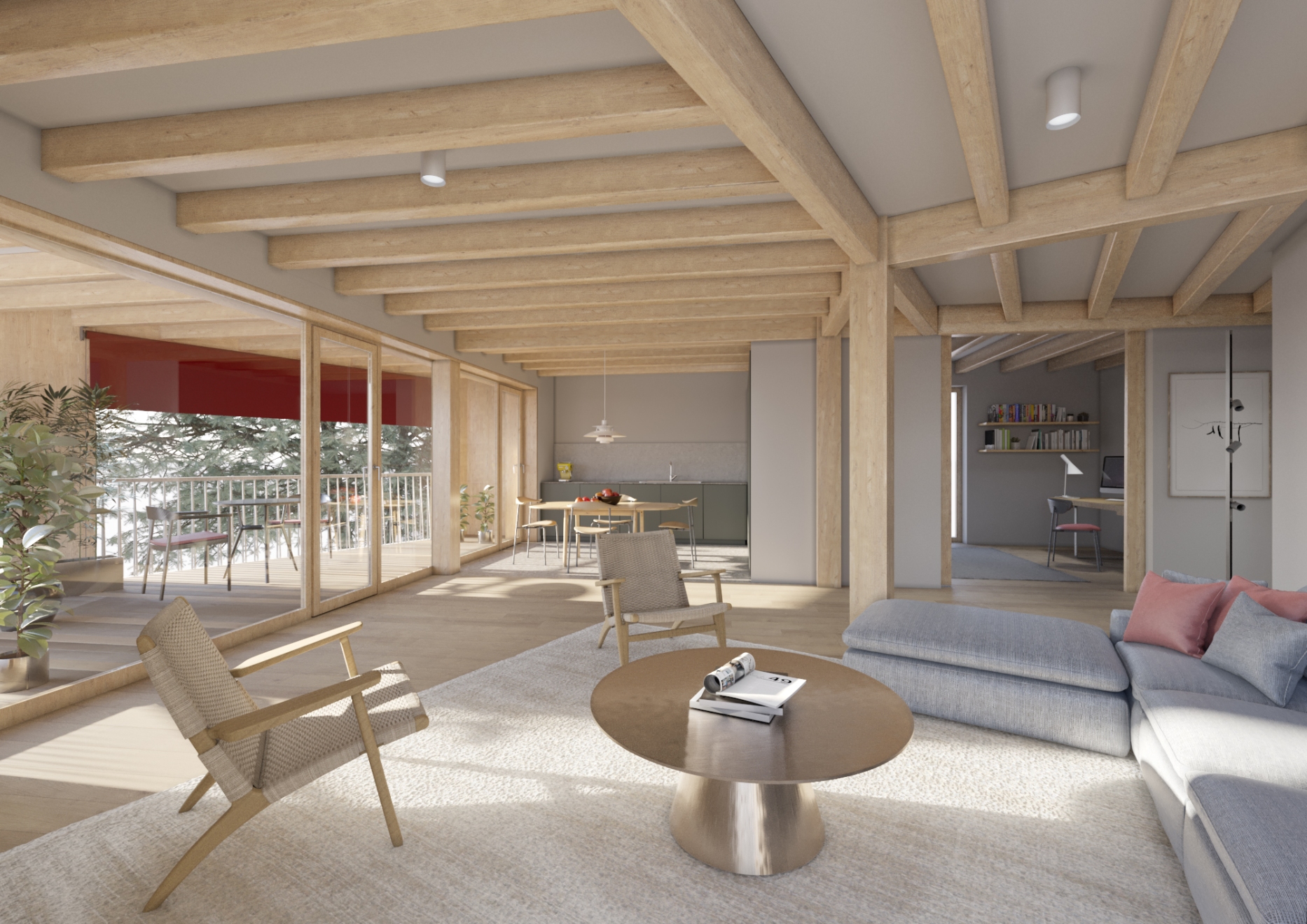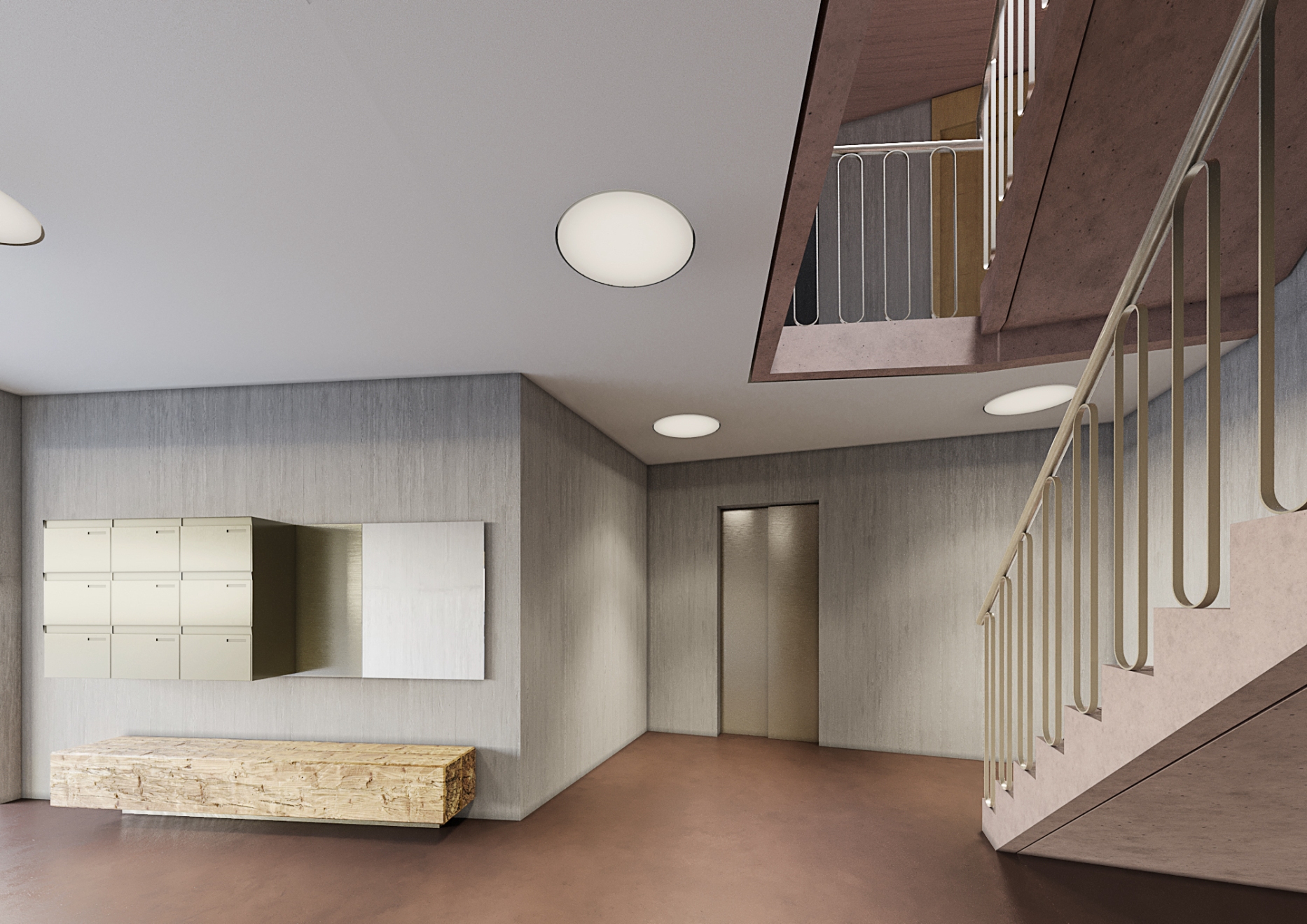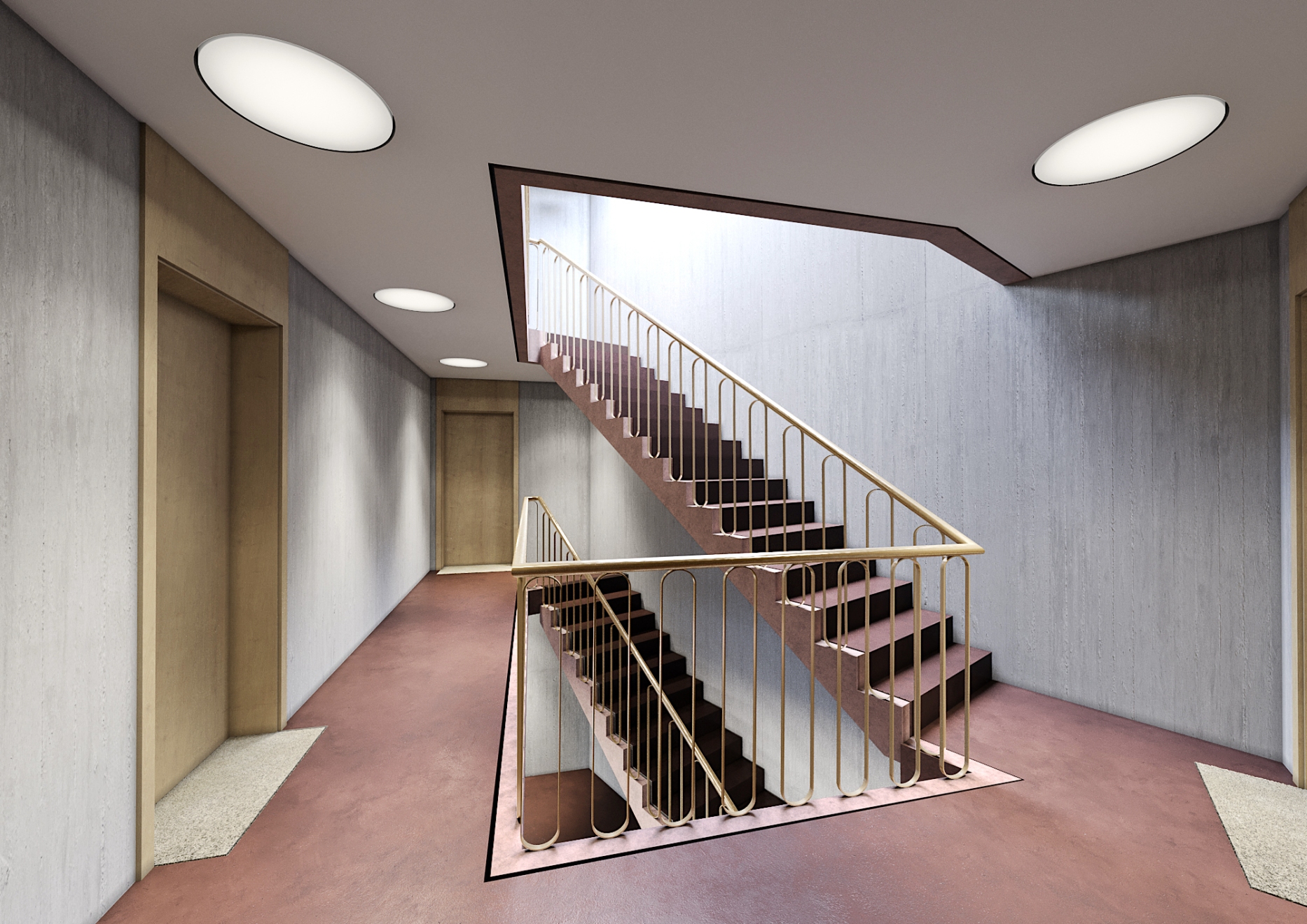A PLACE TO LIVE
Construction of two flat blocks and workshops
Books, studies, articles, treatises, manuscripts and illustrated collections - the historiography of Versoix fills entire library shelves. Faced with this mass of documents, whether erudite, anecdotal or trivial, a simple question arises: what should we retain?
Located eight kilometres from the city of Geneva, between Lake Geneva, the French Pays de Gex and the canton of Vaud, the Versois region is characterised by a strong landscape and a prestigious past. Based on a topographical reality in which the lake is the main character, the town's saga is based as much on proven facts as on events that might have happened. This is particularly true of Versoix-la-Ville, whose singular history is almost indistinguishable from that of the development of the whole commune, long after the era of prehistoric lakeside resorts, Roman times, or even periods of Bernese or Savoyard domination.
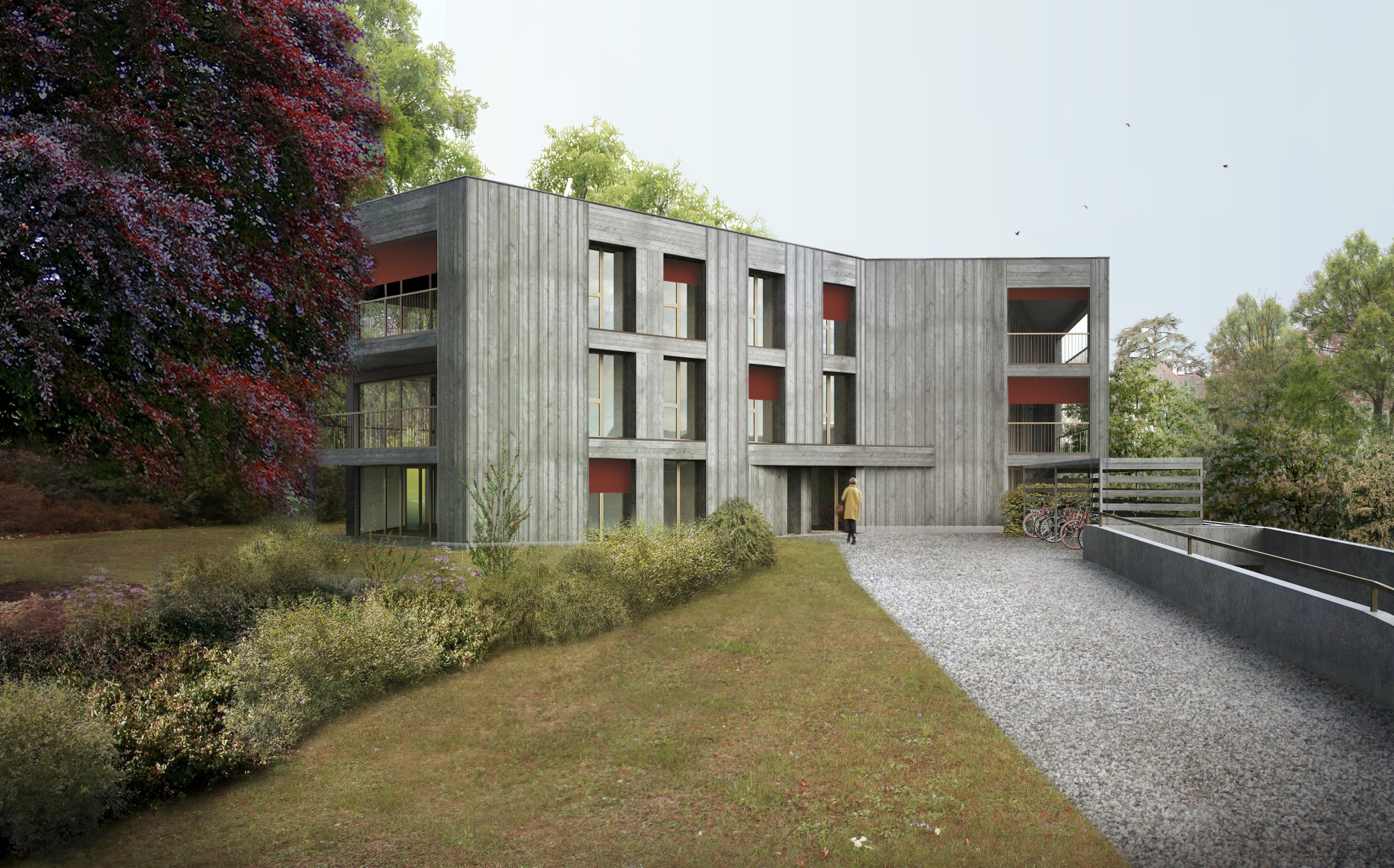
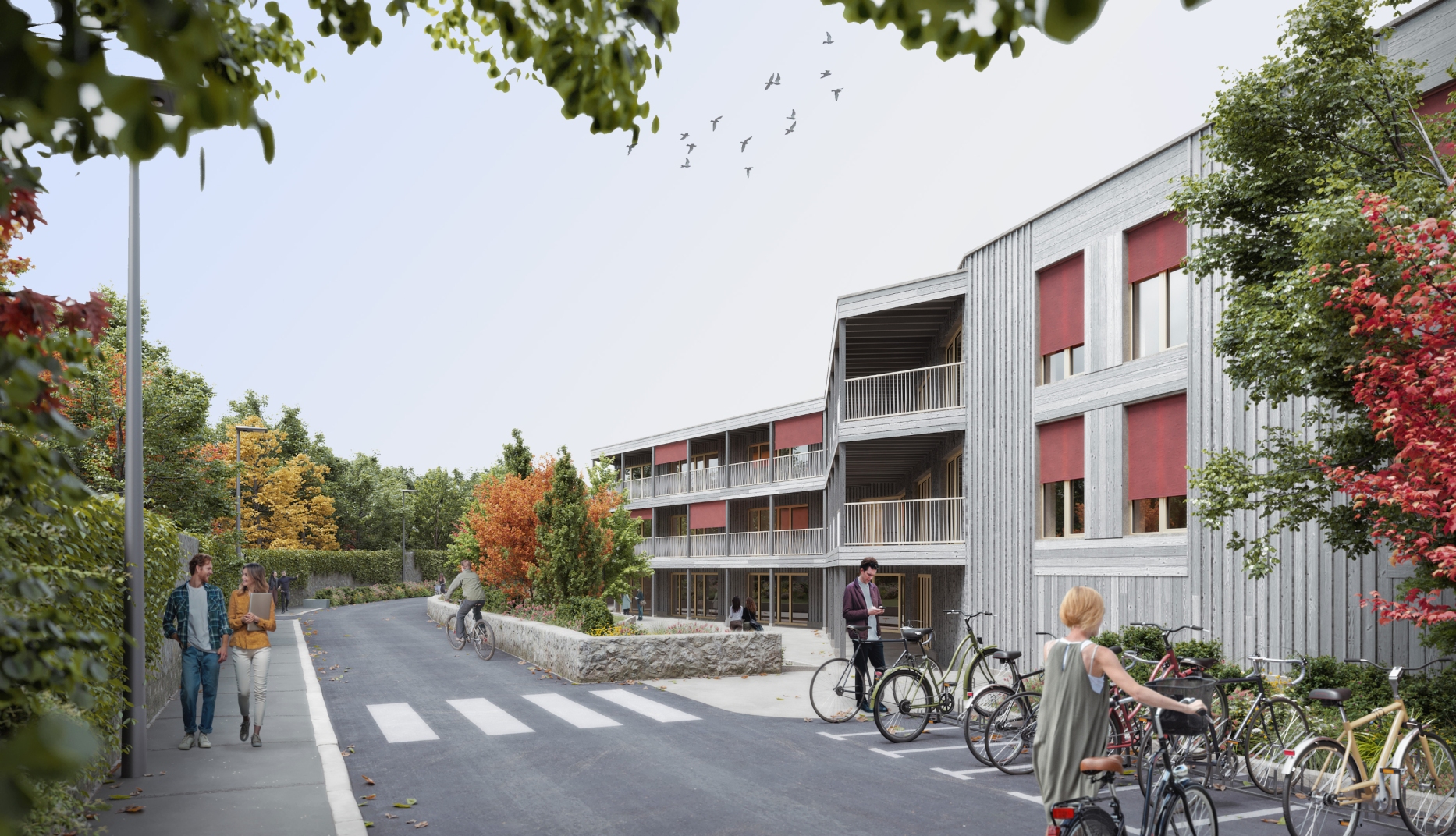
The story
In the 1760s, Louis XV's France was in conflict with the Republic of Geneva. With the support of his powerful monarch, the minister Étienne-François de Choiseul-Beaupré-Stainville (1719-1785), Duke of Choiseul, took the initiative of founding a town to compete with the Calvinist city. Conceived on the shores of Lake Geneva, in the immediate vicinity of a tiny village called Versoix, the project aimed to create a commercial and administrative centre around a new port, which would in fact ruin Geneva. The study of this urban ideal, dubbed ‘Versoix-la-Ville’, was first entrusted to Pierre-Joseph de Bourcet (1700-1780), Director General of French Fortifications, and then to Jean Querret (1703-1788), an engineer with the Ponts et Chaussées department. The plans drawn up by the latter show a regular polygonal shape, circumscribed in an octagon with the banks of the lake swallowing one of the points. In the axis of this figure, crossing a large central circular square and leading to a harbour, a canal carries the water diverted from the river to Lake Geneva.
Known as the ‘Querret plan’, this harmonious complex of beautifully laid-out streets, open spaces and public buildings never came to fruition. But although the disgrace of the Duc de Choiseul signalled the end of the work in 1771, the at least partial realisation of certain elements nevertheless left their mark on the area. Although difficult to detect today, the imprint of a dreamed - almost fantasised - Versoix-la-Ville can be seen in the half-formed central roundabout, several lanes and paths, the trees, the canal leading to the port and, of course, the port itself. It's a tall order for an unfinished project begun more than two hundred and fifty years ago.
Work on the port began in 1768, uncovering a blue clay soil that was ideal for the production of bricks, tiles and earthenware. The completion of the Versoix-la-Ville works thus facilitated the creation of a large tile factory, including not only the factory itself, but also kilns and mills. A proto-industrial settlement of which very little remains, apart from the explicit toponymy on old maps and the mention of a remodelled site, probably the result of soil extraction. In any case, the abundance of this clay seems to have been one of the town's major activities for several generations, up until the early 1900s.
Spanning the whole of the 19th century, the dynamic work of the tilery seems to have fitted in perfectly with the reflections linked to a large-scale project, the implementation of which was to have a considerable impact on the development of Versoix. It was in the wake of the Industrial Revolution, which was transforming the world, that the railway came to the commune. Initially conceived as a link between the cantonal road and the lake, the route was eventually built high enough inland to spare the beautiful properties bordering Lake Geneva. But if you can't make an omelette without breaking eggs, you can't build a railway network without reworking the panorama: inaugurated on the first day of summer in 1858, the Geneva-Coppet line nevertheless passed through the Querret plan, whose original formal clarity was irretrievably blurred.
The site
The fortunate preservation of patrician and bourgeois houses attests to the power of their influential owners. This spatial organisation, with its alternating farmland, wooded areas, large mansions and their outbuildings surrounded by cultivated gardens and orchards, defined the Versois landscape until the 1930s. Many of these mansions still stand today, particularly on the lakeside. Witnesses to a bygone era and preserved in contexts that have often been completely redeveloped, they have survived the decades without giving in to the siren calls of a modernity that, after the Second World War, would turn the whole area upside down.
As part of a canton-wide development plan, the presence of the airport, railway station and numerous international organisations on the right bank of the lake puts Versoix in an ideal position. Driven by the needs of a booming population, legislation favourable to the expansion of the conurbation and the trend towards urban planning conceived in terms of large complexes are encouraging the densification of land that is still undeveloped. Beyond the cantonal road, the western part of the Querret plan saw the emergence of housing units set in the middle of communal green spaces, large concrete bars with a high profile that redefined the perception of an area that had hitherto been very unspoilt.
From the 1960s onwards, this population growth, coupled with technological advances, led to unprecedented social behaviour, particularly in the areas of mobility and leisure. The projects that came to fruition - the port extended on the foundations laid at the time of Choiseul - or those that remained in the town planners' drawers - the airport doubling its capacity and spread over 360 hectares - testify to a desire to meet these new needs. Administrative studies recommended better use of the lakeshore, so that Versoix could assert itself as a local centre for tourism, yachting and leisure activities. The archives reveal ambitions for a reconfigured coastline that are as interesting as they are grandiose. From the old town all the way to the Vaud border, Lake Geneva will be home to artificial islands, playgrounds, campsites, swimming pools and, of course, vast outdoor car parks. Intentions that remained at the stage of colourful plans that anticipated neither the oil crisis nor ecological thinking.
A few years later, a heightened historical awareness led to a return to more restrained intentions. The decision to draw up a master plan within the perimeter of Versoix-la-Ville led the architects to combine the trends of the Querret plan with the existing old buildings. In line with the harbour, up the natural slope of the land, a public promenade runs alongside the clean-cut watercourse, flanked on either side by a string of perfectly ordered buildings. Further up, past the preserved manor house, curved buildings make up the large circular square, itself crossed by the cantonal road. From this image
which incorporates an 18th-century layout, only one building will be erected, whose characteristic curved shape seems quite incongruous.
This incompleteness has the advantage of leaving the beautiful Heimatstil house built in 1909 by de Morsier frères and Weibel in its original context. Cleverly positioned at the top of a vast plot of land between the port and what should have been the circular square, this respectable, perfectly preserved building dominates an exceptional site whose gentle topography opens out onto the clear waters of Lake Geneva. Perhaps due to the excavation of clay during the period of the tile works, a hollow marks the ground, accentuating the view of the landscape and enhancing the splendid trees that line the plot. In the centre of the lawn is a pond and, a little way off, a rural building that predates the main house.
A project
The obvious quality of the landscape reflects a respectful awareness of both buildings and nature, as well as the inseparable link between the two. Integrated over generations, this reality demands sustained attention and constant care for the site. On a more prosaic level, it entails substantial maintenance costs, which controlled densification would have the advantage of alleviating. Although the land tenure system does not call this into question - the land is located in a villa zone, within the protected perimeter of the lakeshore - the development of building rights does not seem to be compatible with the exceptional qualities of the area. The challenge, then, is to maintain the typological foundations of the manor house and, at the same time, to offer future constructions the advantages of a completely unobstructed site.
The notion of open parkland and the deep views characterise the essence of the site and, as such, are an untouchable treasure. Backed up by an understanding of the site's history, this observation allows us to think about a harmonious development that will guarantee a large breathing space around the house. The
The lower part of the site that housed the 19th-century tile works and, higher up, the site of the old rural building - whose demolition has been agreed - seem to be the obvious choices. These were judicious options, which also honoured the historic green belt made up of trees over a hundred years old.
Planning permission was granted after defining the perimeters of the site, the dimensions and accesses, as well as the architectural vocabulary and the typology of the spaces. Despite the considerable challenges posed by the very nature of this sensitive site, the bureaucratic process went smoothly and, in the space of a few months, two applications for planning permission were issued, each for the construction of a residential building. The first is at the bottom of the plot on the northern edge of the parcel, while the second - a larger building - is on the same level as the main house, but on the southern edge.
This administrative achievement did not prevent the options from being verified. On-site measurements revealed that the small building would detract from the existing landscape qualities by reducing the view of the lake from the old house. Although the impact remains modest on the scale of the site, the tangible evidence of this alteration calls for a complete reconsideration of the project.
After a number of studies and variants, the new design now frees up the northern front of the plot to concentrate the buildings to the south, along chemin Isaac-Machard. The idea of two distinct volumes has been maintained, each in harmony with the specific features of the site, whether in terms of topography or tree cover, and without compromising the historic view, a veritable window onto the wider landscape. Although it reduces the gross floor area obtained under the first authorisation, this radical choice brings an unprecedented and undeniable added value in terms of nature issues. This is particularly the case with the reconstitution of a wooded cordon and the conservation of several major trees that were initially slated for felling.
In line with the desire to maintain and even increase the presence of vegetation in the area, the resolutions relating to construction and technical methods aim to reduce the overall carbon footprint of the project. The envelope of the two buildings meets the THPE (Very High Energy Performance) label, with a mixed wood and concrete structure for the slabs, timber-framed facades with mineral wool and recycled reinforced concrete basements. Heat is produced by a ground/water pump with geothermal boreholes. The roofs are fitted with solar collectors, with a total surface area well in excess of the THPE requirements.
These commitments are therefore concentrated in two separate buildings, with different morphologies but a common architectural language, where formal contemporaneity is combined with a sober range of colours and a materiality with traditional accents. These large volumes avoid showing the whole of their façades thanks to a skilful play of fragmented facets. The deceptively random, pleated combination of protruding and re-entrant angles avoids any monotony and offers continuous balconies and pleasant loggias opening onto the landscape. The interior layout has been optimised to ensure that the living rooms enjoy maximum sunlight, while the bedrooms, facing north, are protected from the nuisance of air traffic. Under each building, a very contained basement accommodates all the parking, without any gaping ramps or the possibility of planting the surrounding area in the open ground. In front of the upper building, a square is intended to (re)give the road its role as an open, convivial public space.
Discreetly set on the edge of the park, the two buildings take advantage of the site's vastness without compromising the overall harmony of the landscape. Humble and devoted vassals, they give pride of place to the manor house that has been enthroned in this splendid green setting for over a century. Based on a detailed knowledge of the past, this sober approach is also intended as a tribute to the intrinsic identity of an exceptional site.
